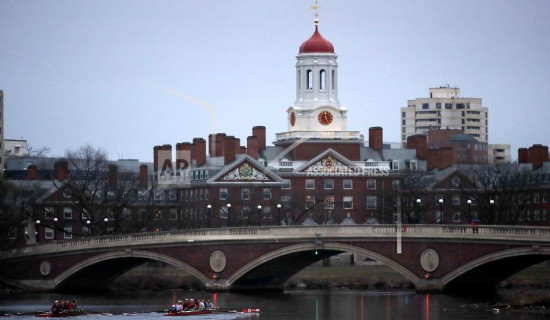- Sunday, 22 June 2025
Mystifying Marvels Of Giant Planets
Dr. Rishi Shah
The night skies of this month would exhibit exquisitely mystifying marvels of giant planets Jupiter, Saturn, and Neptune along with amazingly alluring appearances of planets Venus, Mars, and Uranus. The elusive planet Mercury would be lost in the solar glare.
Chasing it through the constellation Virgo (maiden) during daytime would not be easy. Planet Venus would be visible low in the eastern sky almost hugging the eastern horizon. It could be perceived with difficulty in the eastern dawn sky before vanishing away from view after sunup.
On September 5, planet Venus's 225-day orbit around the Sun would bring it to its closest approach to the Sun (dubbed perihelion) at a dramatic distance of merely 107.71 million kilometers from the Sun. Venus would be gracefully gliding through the charismatic constellation Leo (lion).
The red planet Mars could mesmerize avid onlookers in southwestern sky before sunrise. It could be glimpsed from late at night in the south-eastern sky. It would be mingling with the scintillating stars of the constellation Taurus (bull).
The arcane reddish binary star Aldebaran (Rohini) could be admired below Mars. It would be agreeably fifty-one light-years away. Jupiter could be spotted after sunset in the eastern sky among the shimmering stars that sketch the sprawling V-mirroring constellation Pisces (fishes).
The famed circlet-asterism and the resplendent stars that seemingly stretch and slightly curve to meet the beautifully binary star Alrescha meaning cord in Arabic and which would be denoting the southern tip of Pisces could be wowed above Jupiter. It would be veritably 151 light-years away.
On September 26, the giant gaseous planet Jupiter would be at so-called opposition, when it would make its tight tryst with the earth from a strict span of sensationally 591.30 million kilometers. Astronomers' new eye in the sky, NASA’s James Webb Space Telescope (JWST) has recently captured unprecedented images of Jupiter.
Those pictures that have divulged incredible details of its turbulent atmosphere with Great Red Spot that verify enormous storm swirling for centuries, Jupiter's thin rings conspicuously concocted from dusty debris encircling the planet, appealing auroras at Jupiter's northern and southern poles in addition to those two awesome minute moons, Amalthea and Adrastea and fuzzy features in the background, which have been declared to be galaxies have been considered simply phenomenal and mind-boggling.
Out of Jupiter’s currently confirmed sixty-nine moons, the four massive Galilean moons (Io, Europa, Ganymede, and Callisto) had been famously disclosed in 1610 by renowned iconic Italian astronomer Galileo Galilei.
The ringed planet Saturn would be entering the south-eastern sky at dusk after sundown. It could be sighted splendidly till late night in the southern sky floating above the eastern corner of the triangle-resembling charming constellation Capricornus (sea goat). It would sink towards the south-western horizon.
The far-flung grayish planet Uranus could be discerned late at night in the eastern sky. It could be affirmed till early morning in the southern sky in the sparse section of sky belonging to constellation Aries (ram).
It would fade away in the southwestern sky as the day would start. The captivating constellation Cetus (whale) could be cherished clearly below Uranus. The far-away blue planet Neptune could be evinced after nightfall in the eastern sky. It would hover at the highest place in the sky above the southern horizon around midnight. It would become inaccessible before day-begin when it would slink towards the western horizon.
It would be distinguished as a tiny blue star-alike pin-prick of light cavorting with the stars of Aquarius (water bearer). On 17 September Neptune would be in opposition. It would be a whooping 04.325 billion kilometers away from us.
Attractive asteroid 3-Juno could be extolled from nightfall in the eastern sky till daybreak in the western sky. It would be drifting through the constellation Aquarius at opposition on 08 September 2022 as the fascinatingly faint body. It would be stunningly 196.42 million kilometers away from us. Its orbital period has been quirky 4.365 years.
When any planet or celestial entity would be in opposition, the Solar System would be generally so aligned such that the cosmic objects would lie on the same side of the Sun as earth. At this time, the planet would be at its perigee or nearest point to earth, since the earth would be between the planet and the Sun.
The planet would appear brightest and would rise at around the time the Sun would set. Similarly, it would set at around the time the Sun would rise. It would climb to the highest point in the sky at midnight local time.
The full moon would befall on 10 September. Its popular moniker has been established eponymously as the full corn or harvest full moon because corn would be harvested during this time of year. At the moment of full phase, the moon would lie in the constellation Aquarius and be sheer 369 thousand kilometers from the earth. The new moon would betide on 25 September.
It would be moving through the constellation Virgo and creep very close to the Sun. One should never peer through binoculars or telescopes objects in Sun’s neighborhood. Doing so may result in instant and permanent blindness. Rishi Panchami would rejoice respectfully on 01 September. Venerated Indra Jatra and Ghatasthapana would be celebrated cheerfully on 09 and 26 September.
The September equinox would occur on 23 September, when the Sun would shine directly on the equator and there would be nearly equal amounts of day and night throughout the world. It would mark the first day of fall (autumnal equinox) in the Northern Hemisphere and the first day of spring (vernal equinox) in the Southern Hemisphere.
At the 2022 equinox, Sun would be traversing through the constellation Virgo.
NASA’s un-crewed Artemis-1 mission has been scheduled for blast-off end of August for an ambitious voyage towards the moon and back. The Space Launch System (SLS) mega-rocket would be deployed distinctly for its maiden flight carrying the Orion crew capsule, which would be dispatched decisively towards the moon by its solar-powered service module built by European Space Agency (ESA).
It would take several days to reach the moon and then slip meticulously to scant one-hundred kilometers during its most immediate lunar rendezvous. After taking advantage of lunar retrograde motion for gravitational assistance, Orion would commence the treacherous return journey.
It would have to withstand a searing speed of strongly 11.176 kilometers per second and a trenchant temperature of fierce 2760 degrees Celsius in the earth’s atmosphere. Slowed down by parachutes Orion would splash down off the coast of San Diego in the Pacific Ocean. Divers would then tow it to a nearby awaiting US Navy ship.
Developed by the German space agency (DLR) the capsule would host two quaint mannequin torsos nicknamed Helga and Zohar made of materials designed to mimic bones and organs and they would be attached to sagacious fifty-six hundred sensors for assessing radiation. The third mock-up crew member would be queer Moonkin designated after Apollo-13 engineer Arturo Campos.
This eccentric figure would be fitted with sophisticated instruments for measuring and evaluating acceleration, vibration, radiation, and stresses of space on a human being during launch, spaceflight, and landing. On-board cameras would follow the entire trek. For making life easier for astronauts the future technology demonstration would be performed with Callisto as inspired by Starship Enterprise's talking computer.
An improved version of Amazon's Alexa voice- assistant would be requested from the control center to adjust the light in the capsule and read flight data. Payload of revolutionary ten CubeSats, shoebox-sized microsatellites, would be sent off for studying asteroids, examining the radiation effects on living organisms, and searching for water on the moon.
These projects would be conducted independently by international companies and researchers, who were bestowed with rare opportunities for the execution of their collaborative S&T experimentations in deep space. Orion would perhaps be in space for up to forty-two days.
NASA would test everything thoroughly to be confidently ready for the Artemis-2 crewed mission for carrying humans to the moon’s vicinity in 2024 and the Artemis-3 venture for putting astronauts successfully on the moon in 2025.
Artemis's moon-bound program would build up securely reliable infrastructure for exploring Mars. The landing crew would proudly include the first woman and the first person of color on the moon.
(Dr. Shah is an academician at NAST and patron of NASO)













-original-thumb.jpg)



